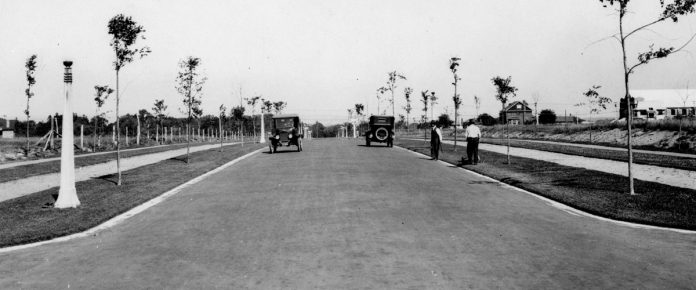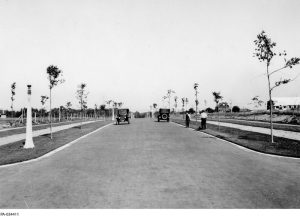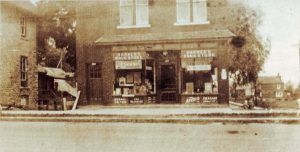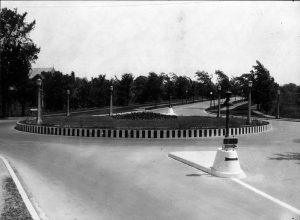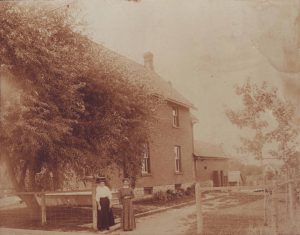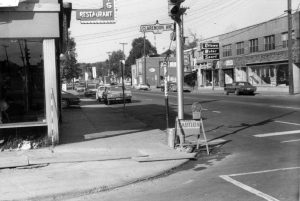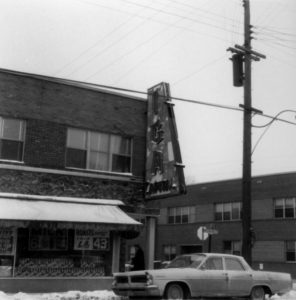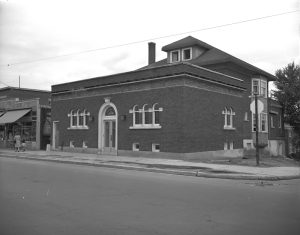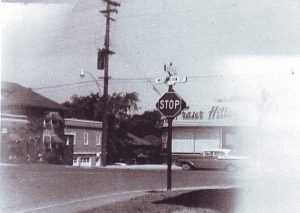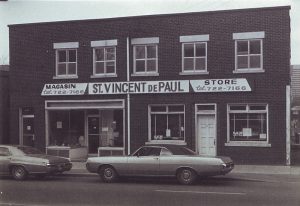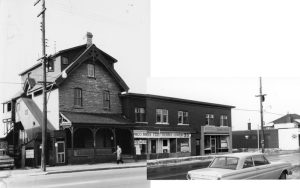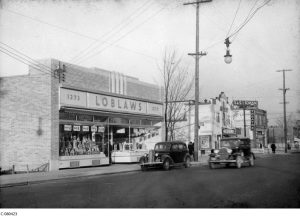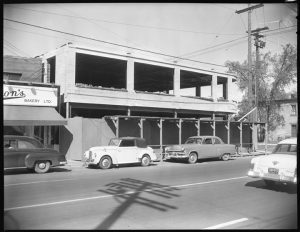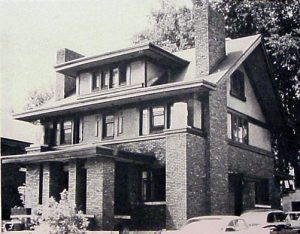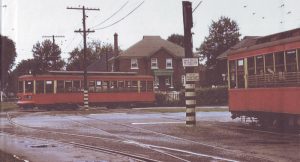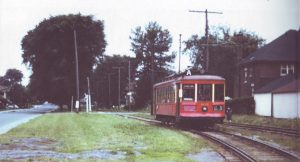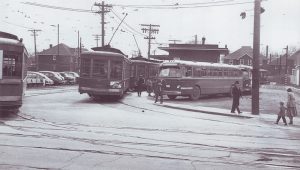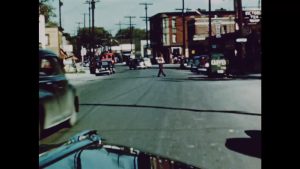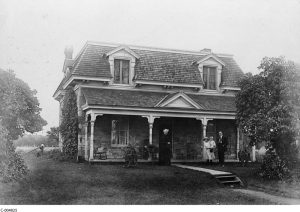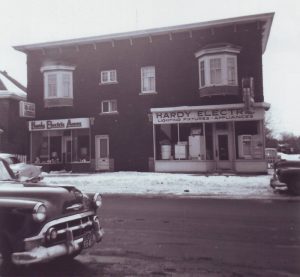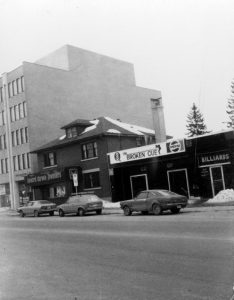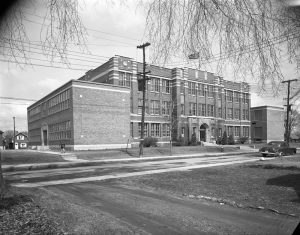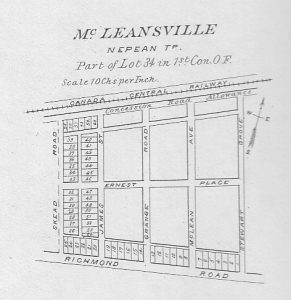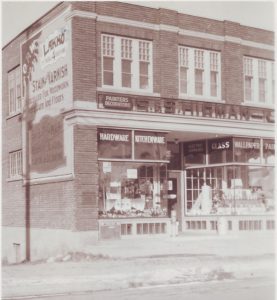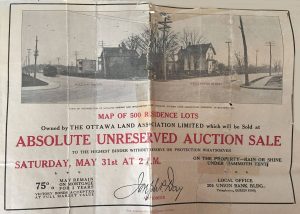By Dave Allston –
Wellington Village turns 100 years old this year, and though now part of a seamless series of neighbourhoods that frequently leads to identity confusion (is it part of Hintonburg? Westboro?), it has a very unique history that sets it apart from those slightly older areas.
It was on May 30, 1919 that the infamous lot auction was held in a circus tent at Wellington and Holland to auction off each lot south of Wellington one at a time to individual buyers (a year later the lots north of Wellington would be sold in a similar auction).
Within just a few years, the first few hundred homes were built and young families were living in homes built by Ottawa’s best local tradesmen, using the finest materials (more often than not) and sourced close-by. The community was then known simply as “Elmdale,” a name later given to the local public school, theatre, tavern, tea room, and other businesses.
The auctions ensured that no individuals acquired large quantities of lots (though some small-time builders did construct multiple houses in the district), and no large-scale developers were involved. The end result was that virtually every house is unique. Global economic factors later further shaped the neighbourhood, establishing two distinct building periods in Wellington Village: houses built between 1919-1929, and those built from 1941-1947 (after the depression and WWII).
Notably, the ground work for the future Wellington Village was actually laid out many years prior, and had real estate swung in a different direction at that time, the neighbourhood might look very different today.
The story of Wellington Village goes back to the original farm grants and the early dirt road that wound its way to Richmond (hence why it was known as “The Richmond Road,” it was renamed to Wellington Street in the Hintonburg and Wellington Village in 1908). It was along Richmond Road that the first settlers built homes, including Scotsman Roderick Stewart, who in 1832 built a stone house at what is now the southeast corner of Wellington and Julian Avenue but at the time was in the middle of pure wilderness in Nepean Township. Stewart and his family farmed an area from Holland to Western Avenue until the 1890s. (Original farmer lots along Richmond Road were typically 200 acres and very narrow and long, stretching from Scott Street to Carling Avenue but were only four or five city blocks wide). One of the original Stewart son farmhouses still exists – physically moved up the street in 1920 – and is now 32 Granville Ave.
The Wellington Village subdivision’s earliest beginnings actually comes in 1875, when Ottawa auctioneer Hector McLean purchased 38 acres of the Stewart farm, the portion north of Wellington, which presumably had been used minimally by the Stewarts as grove and gardening space. McLean laid out “McLeansville” and began offering lots for sale. The roads were laid out similarly to what they are today, but there was one less north-south street, allowing for deeper lots on each street, and lots were 60’ wide instead of 33’ today. “Grange” was an original 1875 McLeansville street name.
Richmond Road was really the only selling point to prospective buyers. The streetcar was still 30 years away, and though trains had begun running along Scott where the Transitway exists today in 1870, the station at Bayview was located far closer to the new cheaply available subdivisions of Hintonburg and Mechanicsville. There was little enticement to live in the area, so the lots remained unsold. McLean built a beautiful stone house in 1876 at the corner of McLean Street (now Smirle, named after the man who bought the house two years after it was built) in an attempt to garner interest, but only a few were purchased. By 1882, the Stewarts had reclaimed all the land through repurchase and foreclosure, and McLean was out of the real estate prospecting game.
In 1892, Roderick Stewart’s son Alex registered an updated plan of McLeansville, adding in the additional street and making a few other small changes, but his plan may have been more of a strategic one as he was in negotiations with a group of investors affiliated with the Ottawa Electric Railway, who were buying up other neighbouring farms such as the Hinton-Holland farm and the Cowley farm.
In April 1893, the Stewarts sold their farm to the ‘Ottawa Land Association’ (OLA), who knew the coming of the streetcar would eventually make the land in the vicinity much more valuable and desirable shortly. Their patience was incredible. Astonishingly, they held on to empty farmland for 28 years, until after WWI when they could sell the lots at a premium. They adopted Stewart’s plan and laid out the area south of Wellington with the narrower (33’ wide) lots.
Two separate small subdivisions along the western edge of Wellington Village were the 1893 Cowley plan called “Ottawa West,” which consisted of the streets west of Western Avenue (the western boundary of the City of Ottawa until 1950, by the way!), and Mayfair and Piccadilly were actually the first plan of the “Hampton Park” community in 1910, so the 100th anniversary technically excepts this portion of the Village.
The OLA held their auctions in 1919 and 1920, and construction immediately began on hundreds of houses and on the local businesses and services that were immediately required. A community was established practically overnight. Within just a few short years, there was a public school (Elmdale), a theatre (Victoria), a hardware store (Higman’s), grocery stores, gas stations, barber shops, doctors offices, restaurants and more. By 1930, over half of Wellington Village’s houses were built, and the commercial Wellington West strip was in full swing.
[Click images to enlarge.]
The neighbourhood continued to experience growth and change: The Victoria Theatre became a car dealership, and later, the site of an apartment building; the Bank of Toronto (now TD) opened in 1937 at the corner of Holland; the Island Park and Richmond intersection, which featured a roundabout from 1929-1957, also featured gas stations on all four corners for nearly the entirety of the 1950s and 1960s. Wellington Street mainstays such as Morris Home Hardware, Hillary’s Cleaners and Lauzon Music all opened in the late 1940s or 1950s; the Laura Secord building (now Second Cup) was built at the corner of Holland in 1955; and the Metro opened in 1967 (as IGA Foodliner). Sadly, the iconic Stewart farmhouse was demolished in 1961, a low point in our community’s history.
Another phase of long-lasting businesses was born in the early 1980s with Wild Willy’s, Duss Brothers BMW, Won Ton House, the Ottawa Bagelshop, and Herb and Spice. They were all part of another shift in the neighbourhood.
Over the past 20 years, property values have skyrocketed, with many new types of businesses opening and sharing the streetscape. Several condo buildings have been built, and some of the original houses are being replaced with infill housing. The character of most streets has yet to be significantly affected as in other neighbouring communities, but it may not be far off.
Yet, Wellington Village and its impressive built heritage, its well-loved businesses, safe streets and friendly vibe has made it an ideal neighbourhood to live, work and play. There is a lot to celebrate in 2019, particularly 100+ years of great history!
Dave Allston is a local historian and the author of The Kitchissippi Museum. His family has lived in Kitchissippi for six generations. Do you have early memories or photos to share? Use this form to contact us!
* This feature is brought to you in part by Produce Depot.
